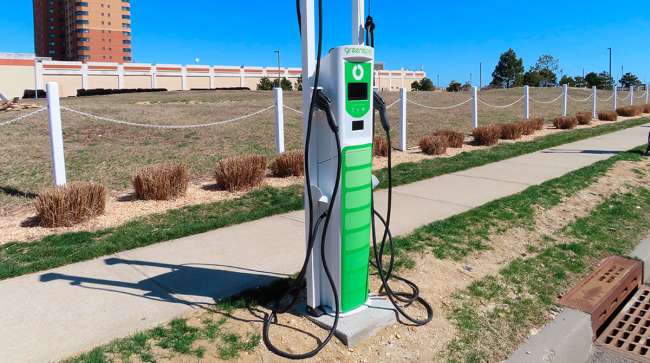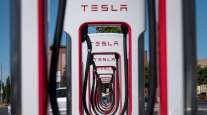FHWA Releases Uniform Guidelines for EV Charging Stations

[Stay on top of transportation news: Get TTNews in your inbox.]
The Federal Highway Administration on June 9 released the blueprint for states to follow to develop the 500,000 charging stations that are key to the Biden administration’s goal of switching Americans from gasoline- to electric-powered vehicles.
The guidelines set the framework for states to follow as they develop the program to install fast-charging stations for electric vehicles about every 50 miles across the country. The goal behind the framework is to develop a uniform system that drivers can use anywhere they want to drive.
In a media briefing June 8, Transportation Secretary Pete Buttigieg said the system must be accessible, user friendly and open to everyone regardless of the type of vehicle they have or where they live. That means charging stations within 1 mile of major highways that can be easily located online or through a cellphone app, where customers will find reasonably similar rates and enough outlets so there won’t be long waits for charging.
FHWA today announced a Notice of Proposed Rulemaking on minimum standards for projects funded under the National Electric Vehicle Infrastructure Formula Program, a step towards making EV charging accessible to all Americans. https://t.co/Uu4evGFo9m #BipartisanInfrastructureLaw pic.twitter.com/BAB1WADVzT — Federal Highway Admn (@USDOTFHWA) June 9, 2022
Competitive grants will be available to help locate stations in rural and low-income neighborhoods.
Buttigieg said the switch to electric vehicles is especially important now with gasoline at record-high prices. The sale of electric vehicles doubled in the past year, he said, and that growth is expected to continue since electricity is less expensive than gas and electric vehicles generally have lower maintenance costs.
“Everyone deserves to benefit from EVs,” he said.
The program is a joint effort between the departments of Transportation and Energy. Energy Secretary Jennifer Granholm said consumers should welcome EVs because they will be “cheaper to own from the very first day,” but the charging network is imperative.
“Key to that mission is to be able to charge that vehicle wherever they want to go,” she said.
Another important element to spurring the public to buy electric vehicles is passage of the administration’s call for tax credits to reduce the initial cost, the secretaries said.
Want more news? Listen to today's daily briefing above or go here for more info
The administration has committed $7.5 billion over five years to the National Electric Vehicle Infrastructure program with a goal of having 50% of the vehicles sold by 2030 be electric vehicles. The program is a key part of President Joe Biden’s infrastructure program because it touches so many areas: job creation in the auto and charging station industries, reducing costs for consumers and substantially cutting air pollution from vehicle emissions.
In Pennsylvania, the state is eligible for $25 million the first year and $171.5 million over five years to develop the state’s charging network with federal funds paying 80% of the costs.
“As soon as a state has a program approved,” said Stephanie Pollack, deputy federal highway administrator, “that can start spending that money.”
Distributed by Tribune Content Agency, LLC




